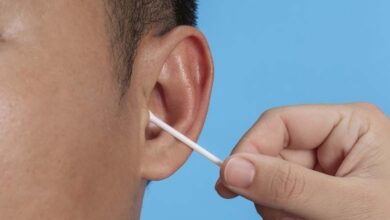Daily Brisk Walking: How to Turn Your Steps into a Source of Strength

Brisk walking is an easy and accessible form of exercise that provides numerous health benefits. Incorporating a 2-kilometer walk into your daily routine can greatly improve your health. However, experts emphasize the importance of following the correct techniques and being mindful of certain potential risks.
-
What happens to the body when walking for 20 minutes in the morning?
-
This way of walking would ameliorate your physical fitness
According to Dr. Surinder Pal Singh, Head of the Physiotherapy Department at CK Birla Hospital in Delhi, brisk walking enhances overall health. Its key effects include:
Improving Heart and Respiratory Health
Brisk walking strengthens the heart and lungs, improving their efficiency and boosting endurance.
Blood Pressure Regulation
This exercise can help lower blood pressure, reducing the risk of heart disease.
Increasing Joint Flexibility
Walking helps maintain joint flexibility and reduces stiffness.
Diabetes Management
Brisk walking aids in controlling blood sugar levels, making it beneficial for diabetics.
Weight Control
Brisk walking burns calories, contributing to weight loss or the maintenance of a healthy weight.
Dr. Singh recommends following international guidelines that advocate 30 minutes of brisk walking, five times a week.
-
The benefits of walking backwards, according to this scientist
-
Exercise Intensity Reduces the Risk of Early Death
Potential Risks and How to Avoid Them
Despite its benefits, brisk walking can have downsides if not practiced properly, as experts point out, including:
Risk of Overexertion
Pushing oneself too hard can lead to an increased resting heart rate, stress, and unwanted weight loss.
Nutritional Deficiencies
Without a balanced diet, the body may suffer from fatigue due to nutrient deficiencies.
Incorrect Walking Technique and Injuries
Walking on uneven surfaces or wearing improper shoes can cause muscle and joint pain, or even injuries.
Safety Tips
Dr. Singh emphasizes the importance of consulting a doctor before starting brisk walking, especially for those with pre-existing conditions such as severe arthritis or heart problems. He also shares additional tips to ensure the benefits of walking while mitigating risks:
- Choose the Right Surface: Opt for flat surfaces to reduce pressure on the joints.
- Wear Proper Shoes: Make sure to wear shoes that provide adequate support and comfort.
- Listen to Your Body: Start gradually and increase duration and intensity over time. Don’t hesitate to take rest days if needed.
- Maintain a Balanced Diet: Ensure your meals provide the necessary energy for your body.
Following these guidelines will transform daily walking into a powerful tool for enhancing overall health, but only if “consistency” is maintained, as experts say, “it’s the key.”












